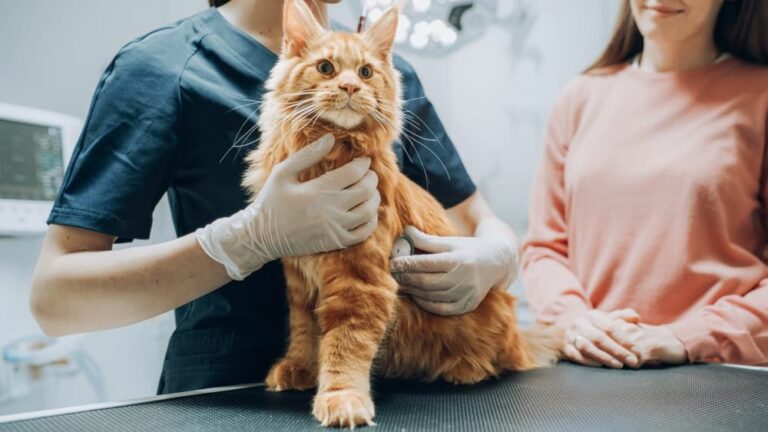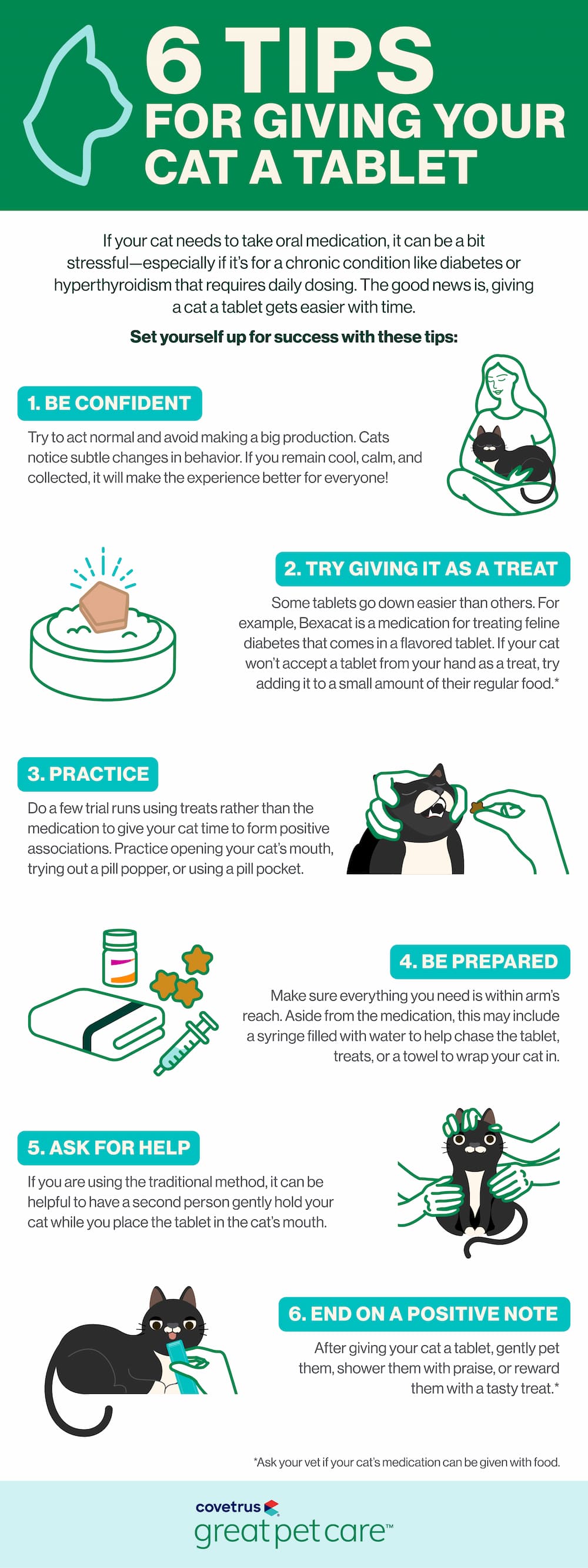Treating Diabetes in Cats Without Insulin

All featured products are chosen at the discretion of the GreatPetCare editorial team and do not reflect a direct endorsement by the author or reviewer.
Once a cat is diagnosed with diabetes, pet parents may feel overwhelmed by how to treat and manage their cat’s condition. While insulin is still a mainstay of treatment for diabetes in cats, there are alternative, injection-free treatment options for some cats. But which cats are ideal candidates for insulin alternatives? Let’s take a closer look.
Treating Diabetes in Cats Without Insulin: Is It Possible?
Yes, it is possible to treat diabetes in cats without insulin. However, not all cats are candidates for oral treatment for diabetes, and insulin therapy is still considered the mainstay of diabetes treatment in cats. Potential candidates are cats who meet the following criteria:
- They have been diagnosed with type 2 diabetes
- They are otherwise healthy and do not have any health complications from diabetes
Type 2 diabetes is the most common type of diabetes in cats, especially overweight and obese cats, and is due to insulin resistance. While cats with type 2 diabetes are making enough insulin, their bodies do not respond appropriately to the insulin, causing blood sugar to remain high.
In contrast, type 1 diabetes is a condition where the body does not make enough insulin. Cats with type 1 diabetes are dependent upon insulin to control their blood sugar and cannot receive oral treatment. In general, cats who require insulin to control diabetes include:
- Cats with type 1 diabetes
- Cats who are sick
- Cats who have been treated with insulin injections in the past
- Cats with liver or kidney disease
These cats are considered poor candidates for oral treatment without insulin, as they are at increased risk for a potentially dangerous medical complication called diabetic ketoacidosis. These cats should regularly receive insulin injections to lower their blood sugar.
How to Treat Diabetes in Cats Without Insulin

Apart from receiving oral medication to control their blood sugar instead of insulin, much of a cat’s basic treatment plan will remain the same as a diabetic cat who receives insulin injections to control their diabetes. This treatment plan includes:
- Daily medication
- Feeding an appropriate amount of food at the same time every day. The best food for diabetic cats is low carbohydrate, moderate- to high-quality protein, moderate fiber, and moderate fat. Most people elect to feed their cat a therapeutic food that is specifically designed to control blood sugar in cats with diabetes
- Weight loss, if indicated
- Constant access to fresh, clean water
- Moderate daily exercise that is at the same time each day, if possible
- Monitoring your cat’s blood or urine sugar or ketones at home, depending on what your vet recommends
- Monitoring for diabetic complications, and calling your vet if you see increased urination, drinking, vomiting, diarrhea, or changes in energy levels or appetite
- Maintaining or improving your cat’s dental health
- Taking your cat to the vet a couple of times a year for examinations and lab work
Treating a diabetic cat without insulin requires administering a daily medication by mouth that is designed to keep blood sugar normal. Medication options that are currently available for treating a cat without insulin include:
- SGLT2 inhibitors, such as Bexacat daily oral tablet
- Glipizide
Treating Diabetes in Cats with Bexacat

Bexacat is the brand name for bexagliflozin, a drug that is known as a sodium-glucose cotransporter 2 (SGLT2) inhibitor. SGLT2 inhibitors have been used in humans since 2013. Currently, Bexacat is the only SGLT2 inhibitor on the market that is approved by the FDA for use in cats. However, additional FDA-approved SGLT2 inhibitors are on the horizon.
This type of medication increases urine excretion of sugar (glucose) by inhibiting SGLT2, a membrane protein in the kidney. Normally, SGLT2 reabsorbs most of the sugar from the blood that is filtered through the kidney. SGLT2 inhibitors, like Bexacat, prevent reabsorption of sugar from the blood as it is filtered through the kidney. The cat then pees out excess sugar in their urine, and their blood sugar is lowered to a normal level.
Bexacat is given as a once-daily flavored 15 mg tablet, and should be given at the same time each day. Bexacat costs about $70 for 30 tablets.
Pros
- Once-daily flavored chewable tablet increases ease of administration, reduces owner confusion if multiple people are caring for the same cat, and improves the quality of life of people who care for diabetic cats
- Can be given with or without food
- Adverse side effects are generally mild and self-limiting in most cats
- The dose is the same for all cats who weigh more than 6.6 pounds
- Very low risk for low blood sugar (hypoglycemia)
Things to Consider
- Can only be used in cats with uncomplicated type 2 diabetes who have never received insulin and are otherwise healthy
- Cannot be given to cats who are dehydrated, have liver or kidney disease, have or have had pancreatitis, or cats with elevated cholesterol or blood triglycerides
- Cannot be given to cats who weigh less than 6.6 pounds
- Common adverse side effects include dehydration, urinary tract infections, vomiting, and loose stools or diarrhea
- Requires ketone monitoring, as some cats are at risk for euglycemic ketoacidosis, a rare but serious adverse reaction
- Long-term use may alter blood calcium levels or increase the risk of urinary tract infections or certain cancers
- Cats may still drink, eat, and urinate more than usual on this medication even though their blood sugar is normal
- Some cats may gain excess weight
Treating Diabetes with Glipizide for Cats
Glipizide (brand name Glucotrol) is a medication used to treat type 2 diabetes in humans. In cats with type 2 diabetes, glipizide is often prescribed to lower blood sugar levels. Glipizide lowers blood sugar by increasing the amount of insulin secreted by the pancreas and by making the tissues of the body more sensitive to insulin. Most cats start with half a 5 mg tablet twice daily and increase to one tablet twice daily if needed.
Pros
- 100 tablets cost about $15, making glipizide relatively inexpensive
- Can be formulated into a tasty liquid, chewable tablet, or transdermal lotion
- Can be used in cats who weigh less than 6.6 pounds
Things to Consider
- There is some concern that glipizide can contribute to progression of diabetes mellitus in cats, leading to a need for insulin injections
- Glipizide tablets must be given twice daily with food
- Transdermal lotion has variable absorption and is not considered reliable
- Use of glipizide in cats is considered ‘off label’ usage by the FDA
- Cats need to be screened regularly for liver toxicity while on this drug
- Not all cats will benefit from glipizide, with benefits reported in around 40 percent of cats
How to Give a Cat a Tablet

Treating Diabetes in Cats Without Insulin: Tips and Advice

Once your cat starts treatment for diabetes, you can expect their clinical signs to lessen once their blood sugar is controlled. This can look like:
- Normalized appetite
- Maintaining body weight or gaining some weight (note that weight gain should not be encouraged in cats with obesity)
- Normalized drinking and urination
- Normalized energy and activity levels
These are all signs that the medication is effective. With oral treatment for diabetes, it can take 6-8 weeks to see improvement in some cats. For newly diagnosed diabetic cats, you can expect to visit the veterinarian several times after starting the medication for physical examinations and lab work to ensure that the medication is helping your cat.
In contrast, if the medication is not controlling their blood sugar or if your cat has other health complications, then you will not notice any improvement or your cat may get worse. It is very important to monitor diabetic cats daily for adverse reactions, especially when they are starting a new medication. If you notice any of the following signs while your cat is receiving oral medication for diabetes, stop giving the medication and call your veterinarian immediately:
- Vomiting
- Diarrhea
- Loss of appetite
- Acting weak or wobbly
- Excessive tiredness
- Increased drinking and urination
If oral medication is not working for your cat, then your veterinarian will endeavor to discover why and eliminate the problem. Dental disease or urinary tract infections, for example, can interfere with blood sugar control. If your cat has high blood sugar but doesn’t have any conditions that interfere with blood sugar levels, then they will likely need to switch to insulin injections to control their blood sugar.
Cats who have type 2 diabetes due to obesity may achieve diabetic remission once they have lost the excess weight, and may not continue to require medication to control their blood sugar. Many of these cats can be maintained in diabetic remission with a strict diet alone. This is one of many reasons that if you have a diabetic cat, it is important to work closely with a veterinarian to monitor your cat’s clinical signs and blood sugar. With the right tools, knowledge, and veterinary care, diabetic cats can live longer and enjoy a good quality of life.









